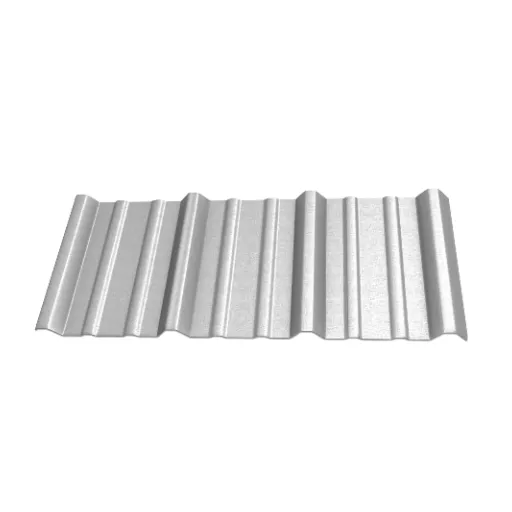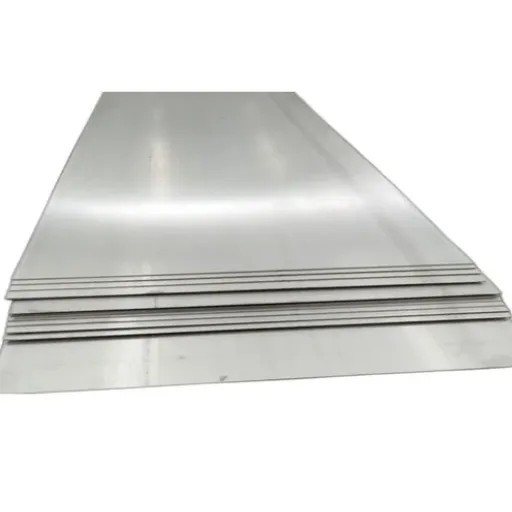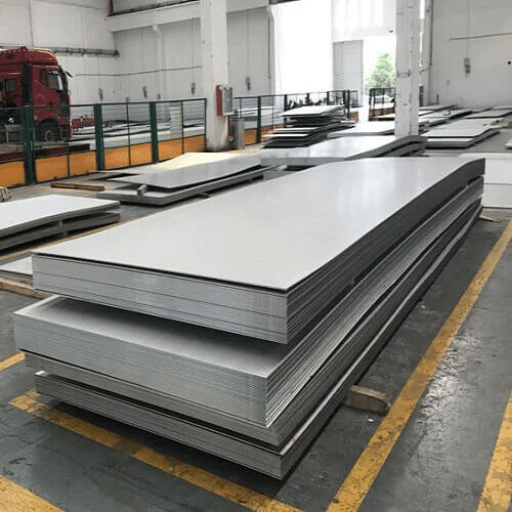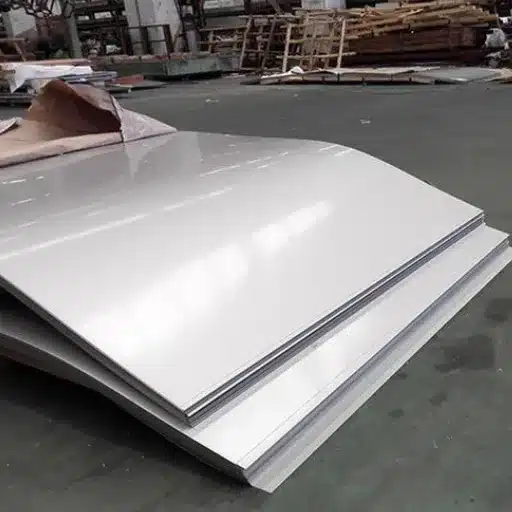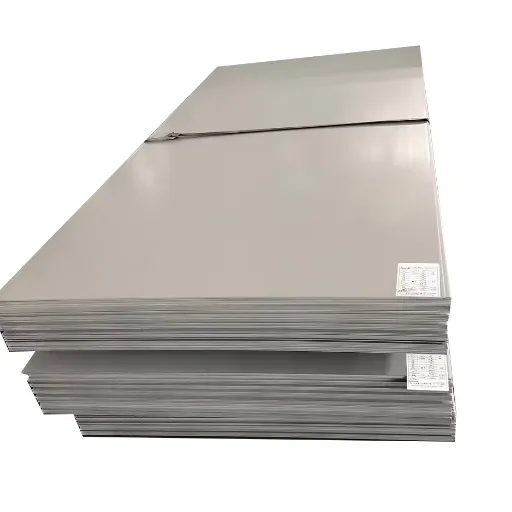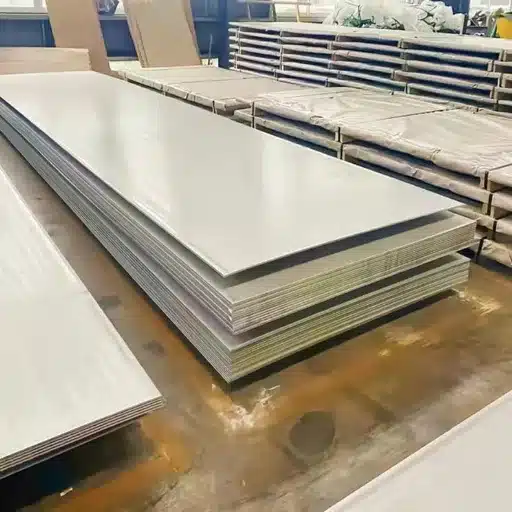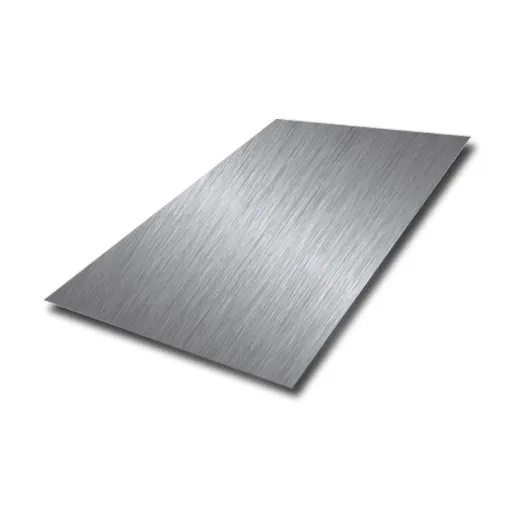These metals have always been trusted to provide excellent resistance to weathering conditions while having an appealing yet very contemporary look. An understanding of the benefits and disadvantages of a galvanized metal roof should help any prospective owner make a better decision in the planning of either new construction or a re-roofing project. This guide covers all you need to know about galvanized sheet metal roofing, from its durability and budget-friendliness to its maintenance and environmental impact.
Introduction to Metal Roofing
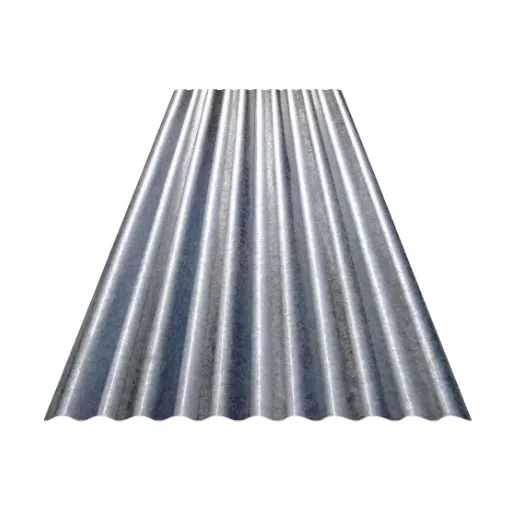
What is Galvanized Sheet Metal Roofing?
Galvanized sheet metal roofing is a kind of roofing material that basically consists of steel or iron to which a thin coating of zinc is applied as a protective layer. This zoning acts as a shield against corrosion, rust, and degrading elements of the environment, thus prolonging life significantly. Any kind of adverse weather conditions cannot cause a problem to the galvanized roofs since they can stand sturdy due to the zinc coating.
Galvanized sheet metal roofs have become popular in the past for durability. They do not give in to moisture, fire, or attack from pests and thereby stay the best low-maintenance option for a homeowner. Additional to this, a galvanized roof is lightweight but strong enough to reduce stress on the building’s framework. Hence, the galvanized roofs are very convenient to install as compared to heavier roofing material.
Besides the functional premises, a galvanized sheet metal roof is also cost-effective. It strikes a balance between its cost and performance; hence it can attract an average homeowner who needs a budget-conscious solution but does not want any compromise on quality. Furthermore, it turns out be an environmentally friendly solution as the elements in galvanized roofs tend to be recyclable, promoting a sustainable and environmentally conscious way of construction.
Benefits of Choosing Metal Roofs
Durability And Longevity
Metal roofs are well known for an exceptionally long lifespan and can persist anything between 40 to 70 years, depending upon its type. Contrarily, asphalt shingles might last 20 to 30 years while metal roofs cannot crack, shrink, or erode in extreme weather conditions.
Energy Efficiency
Metal roofing materials reflect solar heat, cooling the interiors and cutting cooling costs by as much as 25% in hot seasons. Plenty of metal roofs have special coatings that increase energy efficiency thus energy savings to the house as well.
Low Maintenance Requirements
Metal roofs require less agricultural and maintenance care compared with other types of roofing material. The surface texture of metal roofs is hard and slippery, which prevents debris buildup. They are also less prone to damage such as leakage and mold formation.
Weather Resistant
Metal roofs are built with the capacity to fend off severe weather, such as heavy rains, snow, wind, or even fire. They uphold the highest-rating in fire and wind resistance for utmost protection for years.
Eco-Friendliness
The metal roofing materials are usually 100% recyclable after they have completed their life cycle. Moreover, many metal roofs are fabricated from recycled materials, making them a green choice for sustainable construction.
Overview of Galvanization Process
The term “galvanizing” refers to the process by which a layer of zinc is applied to a substrate of steel or iron to protect it from rust and corrosion. The base metal is, therefore, protected against environmental factors leading to its deterioration. Zinc coating provides a barrier for the metal against moisture and oxygen that primarily cause rust.
There are different galvanizing processes, but the most prevalent is hot-dip galvanization. It basically consists of dipping a metal through molten zinc, which, upon cooling, forms a tough and firm layer as a coating over the substrate. In fact, zinc reacts with the metals in the base, forming that protective layer into an alloy on top, with better resistance against abrasion. Alternatively, methods like electro-galvanizing may be employed, utilising electricity to coat a thinner layer of zinc where such a method is fitted for smoother finishing.
Galvanizing metal products naturally extends their lifespan, reduces maintenance costs, and aids sustainability by limiting replacement. This process gets heavy usage in construction, automotive, and manufacturing industries to guarantee a long life and dependable metal components. The importance of the process lies in offering a cheap, maintainable, and environmentally-friendly corrosion-prevention measure.
Advantages of Galvanized Steel Roofing
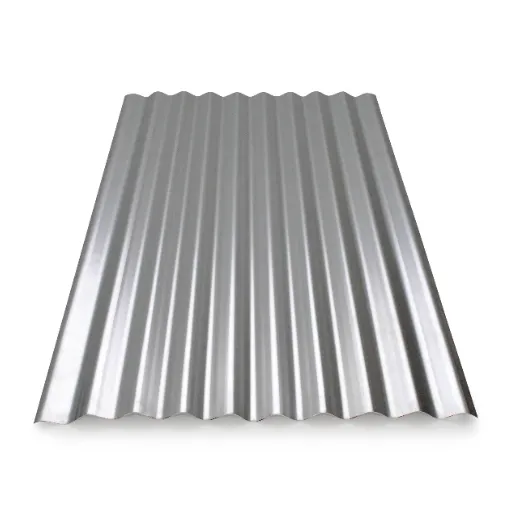
Durability and Longevity
- Resistance to Corrosion: A zinc coating is applied to a galvanized steel roofing, and the coating works as a barrier against rusting and corrosion even during adverse weather conditions, thus offering an extended service life.
- Safety Against Weather: By design, the roofing is able to stand the buffeting of violent showers, hailstones, snowfalls, and winds without any compromise in structural strength.
- Low Maintenance Costs: In comparison with other roofing types, it’s very cheap and easy to maintain due to the robust zirconium coating it has.
- Resistant to Impact Forces: Materials used in this type of roofing can resist any impact that can be caused by any debris or anything else that can cause significant damage.
- Proven Long Duration of Service: In moderate conditions, galvanized steel roofing usually lasts around forty to sixty years and in corrosive conditions can last anywhere between twenty and fifty years, guaranteeing that it is indeed a very durable kind of roofing.
Weather Resistance and Performance
- Resistance to Corrosion: The coating of zinc on galvanized steel acts as a corrosive shield, essentially reducing corrosion even in humid or coastal environments.
- Resistance to Wind: The galvanized steel roofs provide good resistance from strong winds, some systems withstanding winds up to 120 mph or greater; thus, they are good in regions prone to storms.
- Waterproofing: Galvanized steel guarantees it is waterproofed without any leakage as it is installed and designed to be seamless, which protects the structure beneath.
- Temperature Resistance: Temperature tolerance is fantastic, with the roofing able to take extreme temperature variations from heat to cold without warping or breaking down with time.
- UV Protection: The reflective surfaces of galvanized steel roofing help to reflect the harmful UV rays, thus reducing heat absorption by buildings and enhancing energy efficiency.
Energy Efficiency and Cost Savings
- Reduced Cooling Costs: Due to the reflective surface of galvanized steel, less heat is absorbed and interiors are kept cooler during hot weather. Studies have shown that reflective metal roofs can reduce cooling energy costs between 10 and 25 percent.
- Longer Lifespan: Being highly durable and harsher weatherproof, galvanized steel roofings may last about 40-70 years, and this long life leads to decreased replacement and maintenance costs in comparison with those made of traditional materials.
- Reduced Maintenance Issues: Fully resistant in principle to corrosion, rusting, and physical damage, galvanized steel does not allow frequent repairs that could cause expensive maintenance over the years.
- Energy Efficiency Incentives: Many governments and organizations also provide tax credits or rebates for the usage of energy-efficient products such as galvanized steel roofing, thereby lowering the overall costs.
- Recycling and Sustainability: Galvanized steel can be recycled, undermining waste and thus encouraging sustainability. Being recyclable keeps its costs lower for manufacturing and disposal of materials.
Maintenance of Galvanized Corrugated Metal Roofs
Regular Inspection and Cleaning
Gutters should be inspected and cleaned from time to time, ensuring the galvanized strip roof shall stay sturdy and last long. Inspections should be held approximately twice a year, mostly during spring and fall. Look for any rust, corrosion, loose screws, or even structural damages caused by environmental factors, such as wind or hail. Extra attention should be given to overlapping joints and edges, as they tend to trap moisture, which, if neglected for a long time, might trigger corrosion.
Cleaning acts to clear away dirt, debris, and organic materials, such as leaves and moss, that can settle on the surface and potentially stain or damage the roof. A soft brush or gentle power washer should be used to clean the roof surface to ensure that no scratches are made on the protective galvanized coating. Never use harsh chemicals or abrasive materials on these surfaces-the protectant in the galvanized layer would wear off, making the roof prone to rusting. Most cleaning needs would require only mild soapy water, used along with a non-abrasive sponge or cloth.
In case you want extra thorough maintenance, think of applying a clear sealant designed for galvanized surfaces to provide additional protection against weather and UV damages. This alone can give the roofing material many more years of application. Furthermore, proper maintenance of gutters and drainage systems alongside the roof averts water accumulation that could threaten the building. These steps ensure your galvanized corrugated metal roof stays functional and gorgeous for many years.
Common Repairs and How to Handle Them
Though galvanized corrugated metal roofs are largely durable, at times they may require repairs due to wear and tear and external damage. Here are some common problems and how to address them best:
Leaks and Water Penetration
Leaking is one of the common problems that homeowners face. This could be because of loose fasteners, poorly sealed seams, or punctures in the metal. To fix a leak, determine the source and use a metal roof sealant for tiny spaces, ensuring it corresponds with galvanized surfaces. For bigger problems, replace the panels or flashing that are damaged to discourage further water destruction.
Corrosion and Rust Spots
The corrosion and rust may appear when the galvanized-glass protective coat that protects them is damaged in any way. Scrub away rust with a wire brush or sandpaper, and then apply a rust-inhibiting primer and topcoat of exterior-grade paint or sealant to restore protection. Regular inspections help to spot such patches early and reduce the extent of corrosion.
Loose or Missing Fasteners
Loose screws or fasteners cause panels to shift, making the structure vulnerable to wind damage or entry of water. Check all the fasteners; tighten or replace any that might be loose or missing. And always use a fastener with a weatherproof washer for a watertight seal.
Panel Damage from Debris or Hail
Severe weather conditions ranging from hailstorms to falling tree branches can dent or crack the metal panels. Minor dents can be pushed out with the correct tools, but cracked and severely damaged areas would have to be replaced. Take care to match the new panels with the old ones for an even appearance.
Blocked Drainage Systems
Roof-adjacent gutters and drainage systems can collect debris and hedge the water, ultimately damaging the roof. Have these systems cleaned and install gutter guards to prevent blockage. Proper drainage equals roof soundness and functionality.
These frequent repairs, if done without delay, will keep intact the structural integrity of your galvanized corrugated metal roof. Regular inspection, accompanied by an appropriate repair method, will go a long way toward preventing long-term damages and costly replacements.
Long-term Care for Metal Products
Maintenance extends life of metal products and keeps them functioning according to specification and intact with appearance. Begin maintenance with the regular inspections of molecules reacting to corrosion, dents, or even scratches, for the presence of which is enough to disrupt the molecular integrity of the material. The common maintenance protocol includes the use of neutral soap and water for cleaning, which goes out of its way to keep away dirt, debris, and contaminants that could accelerate wear and tear. Moreover, for galvanized or coated metals, a further step can be set forth to protect their wax or sealants from moisture and environmental aggression.
For specially-treated areas exposed to externals very hard in nature, say coastal, the usage of scientifically-proven anti-corrosion coatings or rust inhibitors is paramount. Environmental conditions influence metal performance; choosing products designed for specific climatic services will improve their durability. Also, proper installation that is strictly followed will ensure structural resilience over the years.
Lastly, take into consideration the latest materials developments in ecological metal treatments and preservative techniques for resistance against the natural environment. Equip yourself with knowledge pertinent to the latest technologies and apply them to your maintenance routine for maximum longevity and sustainability of any metal product.
Cost Analysis of Metal Roofing
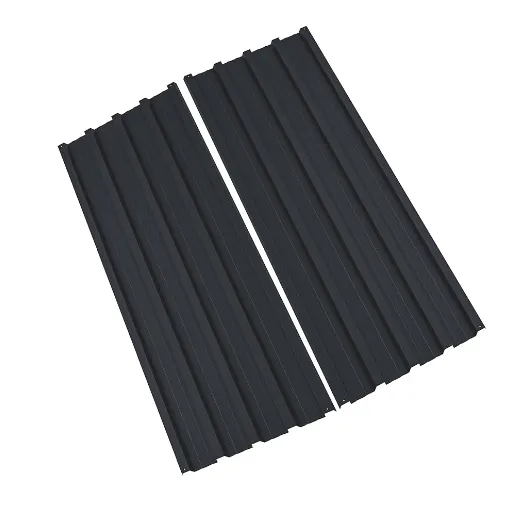
Factors Influencing Metal Roof Cost
Price factors for metal roofing include a variety of considerations impacting price levels depending on the needs of the homebuyer and regional considerations. Some of the primary influences include:
- Type of Material: Metals like aluminum, steel, copper, or zinc vary greatly in prices. While steel is usually the more affordable metal, copper tends to be the higher end with respect to price because of its durability and aesthetics.
- Size and Design of Roof: The size of the roof determines how much material will be needed and the time of installation, directly impacting the cost. Complex roof designs with valleys, dormers, or variable slopes require more time and expertise, leading to a further increase in prices.
- The Thickness of Metal (Gauge): Thicker sheets tend to be much stronger and more durable than thinner ones; hence, they carry a higher price tag. Selection of thickness is usually governed by climatic considerations and the expected service life of the roof.
- Installation and Labor Costs: Being labor-intensive, differences in regional labor rates, like the years of experience a roofing contractor has and his reputation, considerably affect the costs. Installation by a reputable handyman is a guarantee of longevity and hence it goes for a higher cost.
- Underlayments and Additional Materials: The underlayment properly protects the roof from moisture entering through the roof. There are also other requirements such as fasteners, sealants, and insulation that contribute to the installation cost.
- Weather and Climate Considerations: Some severe weather zones require some very specialized metal roofing systems or coatings for ensure protection, which can augment the costs.
- Energy Efficiency Features: Energy-reflective coatings and finishes tend to increase the initial costs but promise long-term gains through reduced energy bills.
Knowing about these factors facilitates the complete cost analysis and enables decision-makers to pick the metal roofing solution that best fits the budget and long-term value. Being up to date on the latest material developments and regional market trends makes the decisions in cost and sustainability more beneficial.
Comparing Costs: Galvanized vs. Other Materials
Galvanized steel may be cheaper in an initial purchase, but it demands more maintenance life after life. On the other hand, aluminum, stainless steel, and Galvalume come with higher corrosion resistance and durability and would bring a better perspective to the long-term cost factor.
| Material | Cost | Durability | Corrosion | Maintenance | Weight | Applications |
|---|---|---|---|---|---|---|
| Galvanized | Low | Moderate | Moderate | High | Heavy | Budget projects |
| Aluminum | High | High | Excellent | Low | Light | Lightweight needs |
| Stainless | Very High | Very High | Excellent | Low | Heavy | Industrial uses |
| Galvalume | Moderate | High | Excellent | Low | Moderate | Harsh climates |
Long-term Value of Metal Roof Investment
Giving money for metal roofing yields exceptional long-term value, owing to its durability, energy efficiency, and low maintenance cost throughout its lifetime. In opposition to traditional roof types, metal roofs last policy more than 40-70 years and thus rarely need to be replaced. Their resistance to unimaginably harsh weather, including major storms, snow, and strong winds, offers a good option for homeowners and businesses in any climate. Most other types of metal roofs, too, are created from green materials, and metal roofing can be perfectly recycled at the end of its lifetime, thus forming a sustainable construction system.
Metal roofing is famous for its energy efficiency, the first among many perks it is offered. Contemporary metal roofing comes with reflective coatings that can reduce heat absorption during the summer, thus decreasing cooling costs. Some research studies demonstrate that reflective metal surfaces could save homeowners up to 25% in energy costs. A great choice to consider with proper insulation in any residential or commercial area for energy reduction is metal roofing. Furthermore, the choice of materials for metal roofs can add to their versatility in many environments since metals such as aluminum or galvalume resist corrosion even in coastal or humid areas.
While metal roofing can be a bit pricier upfront when compared with some traditional materials, it is worth the investment due to the savings for maintenance and energy bills it accrues over time. Metal roofs need very little maintenance because they do not easily crack, warp, or degrade. This difference makes it cost-effective, especially for folks looking for longevity with durability. Metal roofs suit various demands for performance and looks, starting from budget-friendly galvanized steel to more expensive stainless steel or aluminum, thus signaling a valuable and permanent roofing investment.
Comparative Analysis: Metal Roof vs. Other Roofing Materials
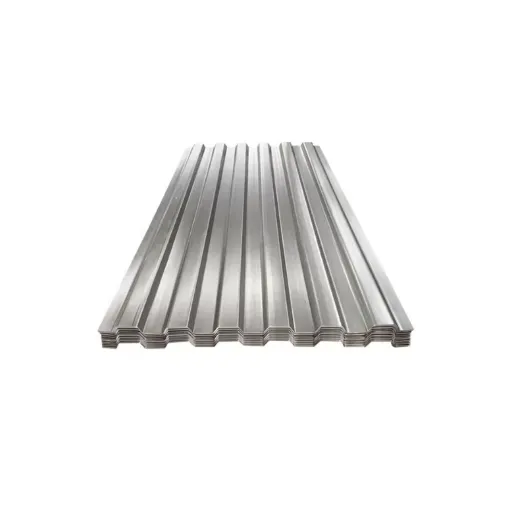
Galvanized Corrugated vs. Asphalt Shingles
Galvanized corrugated roofs are durable, long-lasting, and energy-efficient; they cost more upfront, whereas asphalt shingles are affordable, easier to install, and require frequent maintenance.
| Aspect | Galvanized Corrugated | Asphalt Shingles |
|---|---|---|
| Expense | High upfront | Low upfront |
| Lifespan | 40–70 years | 20–30 years |
| Upkeep | Minimal | Frequent |
| Efficiency | Reflective, energy-saving | Heat-absorbing |
| Setup | Complex | Easy |
| Appearance | Modern, sleek | Classic |
Standing Seam Metal Roof vs. Corrugated Panels
Standing seam roofs present a sleek look, are highly durable, and offer excellent weather protection as contrasted with corrugated panels, which are cheaper, easier to erect, and, thus, require higher maintenance.
| Aspect | Standing Seam | Corrugated Panels |
|---|---|---|
| Cost | High | Low |
| Durability | 50+ years | 30–40 years |
| Maintenance | Minimal | Frequent |
| Weatherproof | Excellent | Moderate |
| Aesthetics | Modern, sleek | Rustic, industrial |
| Installation | Complex | Simple |
Pros and Cons of Each Material
When contemplating standing seam metal roofs with corrugated panels, it is necessary to consider their respective advantages and disadvantages. Standing seam metal roofs have the modern look of concealed fasteners that create a smooth uninterrupted surface-all design elements that enhance strength and resistance to weather, best suited where weather conditions tend to be extreme. On the drawback, it costs so much up-front and requires professional installers, which are concepts of which an end consumer may not have been aware.
Corrugated metal panels, on the other hand, present a cheaper alternative with a wider range of applications. They have visible fasteners that make them easier and cheaper to install. That rugged industrial style finds a way to complement some architectural and aesthetic tastes. However, the downside is that they can become less durable over time and will require being looked after somewhat to preserve their lifespan and structural integrity.
Personally, I would recommend a standing seam metal roof if the long-term value, durability, and modern aesthetics are the priorities. However, if price factors in with quick installation, corrugated metal panels are much more workable. Ultimately, though, depending on the specific needs, tastes, and resources of the homeowner, the decision can be made.
References
-
Galvanized Roofing: Its Selection, Application, and Maintenance
Ohio State University Knowledge Bank
This document discusses the importance and application of metal roofing, including galvanized materials. -
Flexural Properties of Corrugated Metal Roofing
Missouri University of Science and Technology Scholars’ Mine
This paper explores the structural properties and advantages of corrugated metal roofing. -
Durability of Paints on Weathered Galvanized Roofing
University of Illinois IDEALS Repository
A study on the durability and maintenance of galvanized metal roofing in various conditions. - Click here to read more.
Frequently Asked Questions (FAQ)
What is galvanized sheet metal roofing?
Galvanized sheet metal roofing, as far as the elemental structure is concerned, is any kind of roofing material made with steel, with zinc coating over it to provide protection against corrosion. Depending on it, the roofing is durable, weather-resistant, suitable for all sorts of climates.
How are galvanized sheet metal roofs different compared to asphalt shingle roofs?
The longer life of the galvanized sheet metal roofs, lower maintenance, and excellent corrosion resistance are some advantages that they enjoy over asphalt shingle roofs. Asphalt shingle roofs usually last 15-30 years, whereas galvanized ones, if installed properly, may last for over 50 years.
What are the benefits of installing corrugated galvanized roofing panels?
Corrugated galvanized metal roofing panels offer the combination of lightweight, easy installation, and supreme strength and durability. With the special design, it facilitates water drainage and leak prevention for a higher level of demand in both residential and commercial roofing projects.
What does the installation process for galvanized metal roofing consist of?
A galvanized metal roofing installation consists of prepping the roof deck, installing the underlayment, and fastening metal panels with either exposed fasteners or concealed fasteners. It is extremely important that you ensure proper alignment of the panels, sealing using flashing, and using ridge caps for maximum performance of your roof.
Are various types of galvanized sheets used for roofing?
Yes, there are different types of galvanized sheets such as G-90 and G-60, which mean the coating weight of zinc applied. Automotive-grade G-90 has better corrosion resistance, making it suitable for more severe environments.
Can galvanized sheet metal also be used for siding?
Surely! Galvanized sheet metal can also be used in roofing and siding applications. Metal siding presents a modern look with durability and resistance to weathering, much like galvanized roofing panels.
What is the price of installing galvanized sheet metal roofing per square foot?
The price of installing galvanized sheet metal roofing can vary significantly depending on factors such as the type of metal used, thickness, and intricacies of the roof. Installation usually averages to anywhere between $5 and $12 per square foot, depending on the combination of materials and labor involved.
How does galvanized roofing perform as compared to the other metal options?
Galvanized roofing is well-known for excellent performance because of its corrosion and weather resistance characteristics. Compared to other metals like galvalume or aluminum, this sort of steel tends to offer a cheaper alternative coupled with excellent durability.
What kind of maintenance does galvanized sheet metal roofing require?
To maintain galvanized sheet metal roofing is minimal but important. You would want to be on guard for rust, loose fasteners, and damaged panels. Clear out the gutters and downspouts to facilitate drainage. Keeping the roof clean will also add to its longevity.

